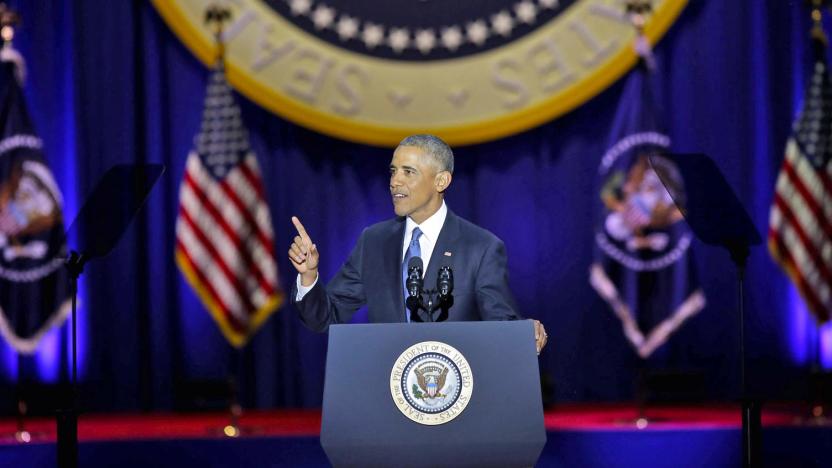braininitiative
Latest

Obama's legacy: The most tech-savvy president
When Barack Obama moved into the White House on January 20th, 2009, the federal government was in the digital dark ages. Even as late as 2011, he was complaining that the White House was 30 years behind. Among other things, Obama was the first president to carry a BlackBerry, and even so, it wasn't until 2016 that the leader of the free world was finally able to trade in his aging RIM device for a modern smartphone. And, as the president was quick to point out in an interview with Jimmy Fallon, the unnamed phone is so locked down, it's like one of those "play phones" you'd give to a 3-year-old. Despite these hurdles, Obama made it one of his priorities to modernize the federal government on everything from telecommunications policy to White House IT. He tackled infrastructure, STEM education, net neutrality and climate change in serious and substantive ways. Of course, the president's efforts weren't always a rousing success, and on issues involving privacy, spying and drone usage, he faces lingering criticism from both ends of the political spectrum. But, love him or hate him, for better or worse, when it comes to science and technology, Barack Obama has had a bigger impact than almost any president in history.

Obama's 2013 'BRAIN' initiative results in remote-controlled mice
The first results to stem from President Barack Obama's 2013 "Brain Research through Advancing Innovative Neurotechnologies" initiative are in, Reuters reports. As noted in the journal Neuron, scientists were able to manipulate the brain circuitry of lab mice, making them move, stay still, eat or leave their bowls of food behind. This was accomplished through the use of DREADDs, "designer receptors exclusively activated by designer drugs." The DREADDs system uses genetically engineered brain neurons to create custom receptors that lock into manmade molecules, activating whichever neuron scientists target. The DREADD method is a noninvasive form of behavior control, first introduced about a decade ago as a way to turn neurons on or off -- the newest DREADDs are the first to be able to do both.

The US military wants brain implants to treat combat trauma
For soldiers coping with brain injuries and post-traumatic stress, coming home may be tougher than the actual fighting; their conditions can last a lifetime. Long-term relief may be on the horizon for US veterans, though. DARPA is supporting the White House's brain mapping initiative by funding the development of implants (conceptualized below) that alleviate the symptoms of warriors' mental problems, ranging from PTSD to extreme depression. The technology, built by Massachusetts General Hospital, Draper Laboratory and UC San Francisco, will use sensors to watch for unusual neural activity at multiple parts of the brain. If something's wrong, the implants will use deep electrical stimulation to restore healthy activity -- permanently, if possible.


